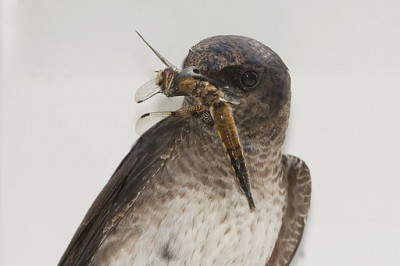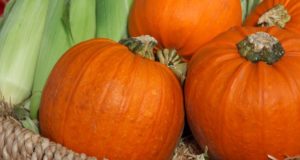Many species of birds have been on the decline in the U.S. for several years. Reasons for the population decline include loss of habitat, pesticides and herbicides, and feral cats, among others. There are ways in which you can attract birds to your homestead and your garden, not only to help bird populations rebound, but also to improve the state of your garden. Many types of birds are beneficial to have around for more than just the enjoyment of their songs.
Birds Belong in Your Garden
There are many reasons why you should be interested in attracting birds to your garden, yard, and homestead. Birds are a natural and vital part of nearly every ecosystem on earth. As with any other part of the local environment, when birds disappear, other elements of the ecosystem suffer and begin to fall apart. Here are some other reasons you need to draw birds in and make sure they are a part of your life:
- They eat the insects you want to eliminate or minimize from your yard and garden. When you have a healthy bird population, you have a healthy insect population. Birds will eat and reduce the number of pest insects including those that attack your plants and those that attack you, often bringing the pests back to a reasonable and controllable number.
- Birds also eat seeds. Birds are great at controlling weeds because they eat the seeds of these plants and help in the effort to keep them from overrunning your garden.
- Some birds even eat pestilent rodents. Raptors like owls and hawks are great rodent controllers.
- You can stop using pesticides and herbicides. Birds are just one piece of the puzzle, but they are an important element of an organic garden. With their help controlling pests and weeds, you can eliminate the use of toxic chemicals.
- They are beautiful to watch and to hear. There is nothing like waking up to the songs of birds. The cheerful chirping is one of the first signs of spring and a delight to hear. Additionally, you can enjoy watching birds come to your feeders and swoop around in the evening getting rid of insects for you.
Some of the Best Birds to Bring to Your Yard
Any native bird is a boon to your garden, but some are especially beneficial.
- Purple martins. These swallows are a beautiful blue-black color and are great insect eaters. Like other swallows, they fly close to the ground and eat insects on the move. They do this mostly at dusk and are a delight to watch on a warm summer night. Purple martins are wonderful for controlling insects, especially mosquitoes. They live in colony houses and bunk together in groups. Natural cavities, like holes in trees, are good homes for purple martins, but you can also encourage them in your yard by providing them with large homes. You can make them out of plywood and scrap wood, but dried and hollowed-out gourds also make excellent purple martin homes.
- Red-tailed hawks. Raptors are a great type of bird to have around your homestead for the purpose of rodent control. Red-tailed hawks are an important part of many ecosystems in the U.S. They are top predators, and when their population declines, the numbers of small mammals go up. If you grow grains on your homestead, having a pair of red-tailed hawks around is especially helpful. The best way to get a pair to make a home in your area is to give them an ideal place to build a nest. They prefer a spot that is separated from other trees and that has good views of surrounding fields. If you don’t have a tree that meets these requirements, construct a tall nest platform in the middle of your field or property. If you are raising small animals on your homestead, like rabbits, make sure they have a covered enclosure to protect them from hawks.
- Quail, pheasant, and turkey. Wild game birds are an excellent addition to your property. Besides being a natural part of the landscape, they can be a great food source. Although their populations have been in decline over the last fifty years or so, with the right management practices you can obtain a healthy population of game birds. Quail and pheasant live close to the ground, so they need to be able to move across it, but they also need some shelter to feel safe from predators. They thrive when they have patches of open area, bunch grasses, and agricultural crops or annual weeds. The bunch grasses are especially important, as this is where the birds will nest. The best way to create areas that these birds like is to simply let the land be. Keep some areas unmanaged, and the birds will come.
- American goldfinch. These beautiful, brightly colored birds are great seedeaters. They can help you control your weed population by eating the seeds before they sprout into more unwanted plants. Goldfinches will be attracted to your garden naturally and especially to areas with feeders.
- Bluebirds. Bluebirds are striking, small, blue birds whose population declined drastically thanks to the competition from invasive species like starlings. Western bluebirds prefer an open forest environment, while the eastern variety likes open fields. They eat insects and small fruits, helping to spread seeds. Perhaps the best reason to attract bluebirds, however, is to enjoy their sight and songs. To encourage bluebirds, give them a proper home. They nest only with a roof over their heads, so provide small birdhouses with one entry hole.
General Techniques for Attracting Birds
Aside from the specific bird species that you may want in your garden, there are many general ways in which to ensure birds will flock to and enhance your property. You need to have a variety of plants that birds like for their food and shelter, as well as a range of homes for birds. Conifers are important trees for birds. Many different birds eat the berries, seeds, buds, and sap from conifer trees. They also provide year-round cover and nesting sites.
Grasses and legumes are important for ground-nesting birds. If you keep some areas of your property natural and do not mow it, you are providing an important habitat for creating nests, for protection, and for food. Birds use tall grasses to hide and to reproduce. They also eat the seeds. Keep leaf litter in this natural area in the fall, and insects will grow there. Birds will follow.
Flowering and fruiting plants provide and important food source for certain birds such as hummingbirds and orioles. Coral bells, red yucca, scarlet sage, and trumpet creeper are just a few examples of plants that draw in nectar-eating hummingbirds. Plants that produce berries in the summer like serviceberry, blueberry, blackberry, chokecherry, and elderberry attract birds like robins, catbirds, thrushes, woodpeckers, waxwings, cardinals, and brown thrashers. Those that make fall berries, including dogwoods, cotoneasters, winterberries, and mountain ash, attract migratory birds.
Natural sources of food are essential to hosting a health bird population, but if you hope to enjoy the sight of birds in your yard, consider also providing feeders. Having feeders near your home draws the birds in so that you can enjoy the view from inside. For a variety of birds, put out a variety of feeders. Use hoppers, tubes, and trays. Provide different types of seeds as well as suet to get all kinds of birds. You should be most vigilant about providing feed in the winter when birds need it most. Keep your feeders full, and you can enjoy birds all winter long.
Places to live are as important as food. A variety of trees are an excellent way to entice birds to your property, but you can enhance these natural homes with artificial ones. Large houses with several openings on a tall pole will attract purple martins and other swallows. Smaller birdhouses will attract bluebirds and other small songbirds. If you have a barn, you will entice owls and barn swallows to take up residence.
When you take the time to consider what native birds in your environment need, you will be rewarded with the sights and sounds as well as the beneficial behaviors of a variety of species on your property.
©2012 Off the Grid News
 Off The Grid News Better Ideas For Off The Grid Living
Off The Grid News Better Ideas For Off The Grid Living





